Syrian Bean Caper
Information
Zygophyllum fabago - Zygophyllaceae Familiy - Perennial
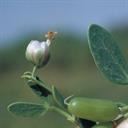
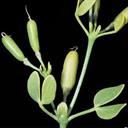
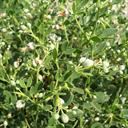
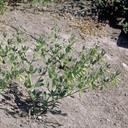
Identification
- Flowers: The flowers are small bunches of 5 petals with prominent stamens. They are white to light pink and can span up to .75 inches.
- Seeds: Seed pods are up to 1.5 inches long, oblong, and ribbed.
- Leaves: Leaves are oblong and grow from 0.5 to 1.5 inches. They appear in groups of 2 opposite each other on the stems. They are extremely waxy, lack hair, and have smooth margins.
- Flowering Time: May through August.
- Life cycle: Syrian Bean-caper is a perennial succulent that sprouts in mid-spring and flowers from May through August. It produces seeds shortly thereafter, from August through October.
Impacts
- Syrian Bean-caper is very well suited to desert environments, growing extremely quickly and easily outcompeting other native plants.
- Syrian Bean-caper is unpalatable to livestock and can decrease the economic value of feed crops in infested areas.
- Once it colonizes an area, Syrian Bean-caper rapidly takes over due to its rapid growth and rhizomatous root system.
Control
Most effective control methods
- Small infestations of Syrian Bean-caper can be controlled by manually pulling, but special care must be taken to remove the entire root system as new plants can sprout from the rhizomatous roots.
- There are currently no biocontrol agents in use to combat Syrian Bean-caper in the US.
- Syrian Bean-caper can be effectively controlled through chemical means, although the waxy coating on its leaves can make application difficult. Picloram and glyphosate are commonly used to control this plant, but repeated applications are necessary. Surfactants can help improve the effectiveness of herbicide application.
Large Images
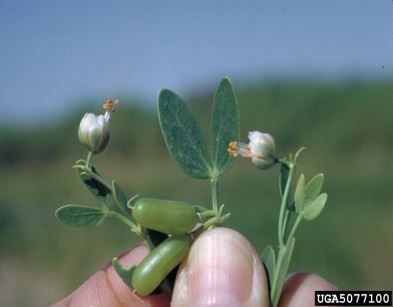
Syrian beancaper: flowers and fruit
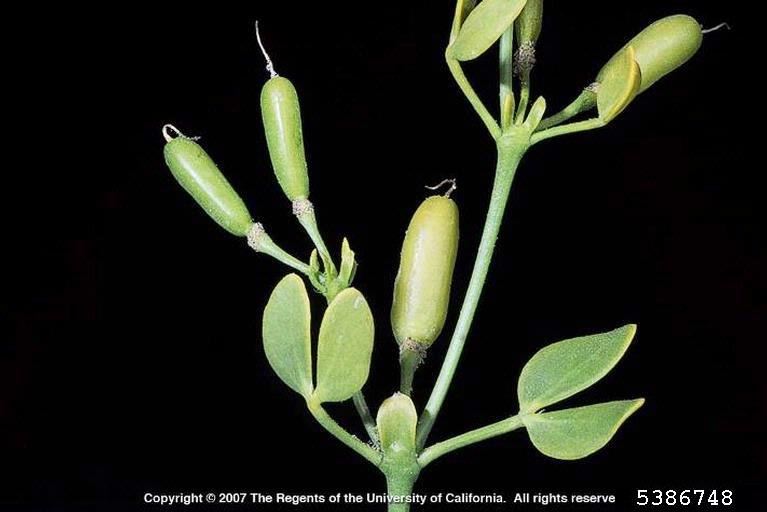
Syrian beancaper: fruit
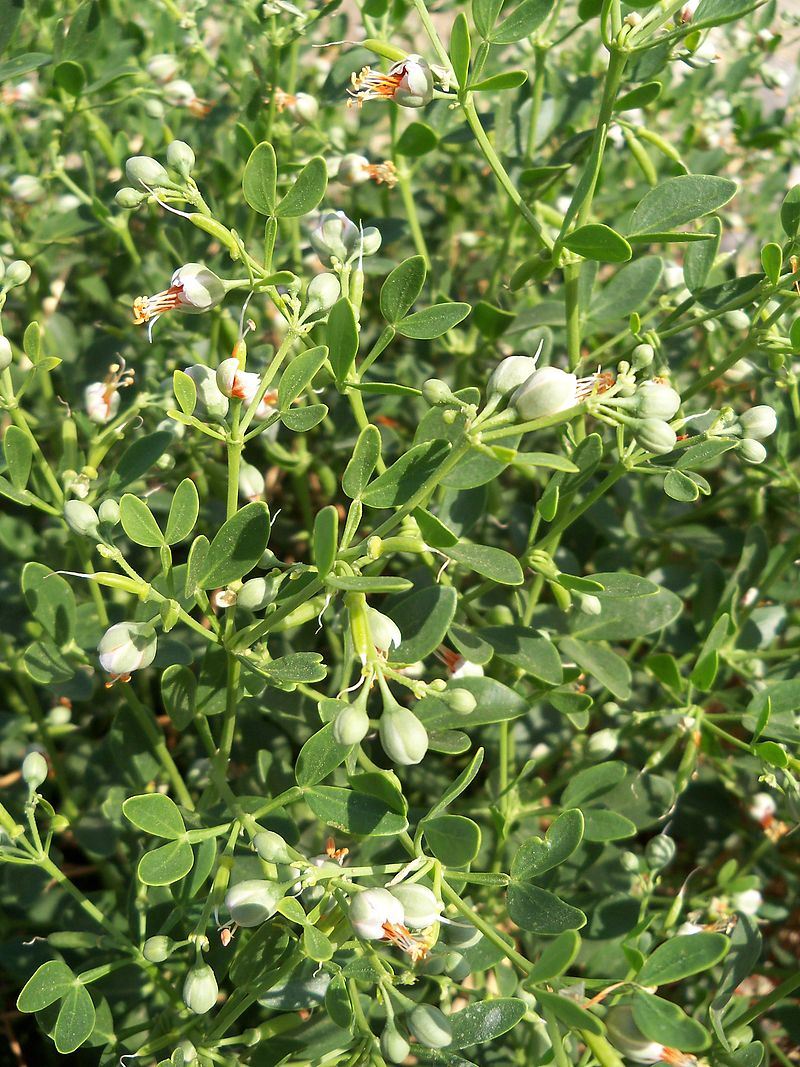
Syrian beancaper
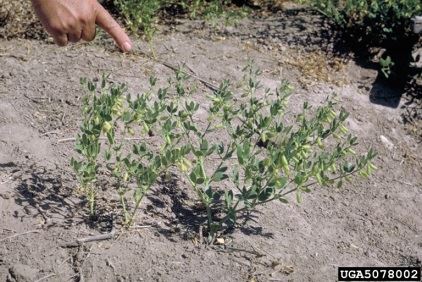
Syrian beancaper
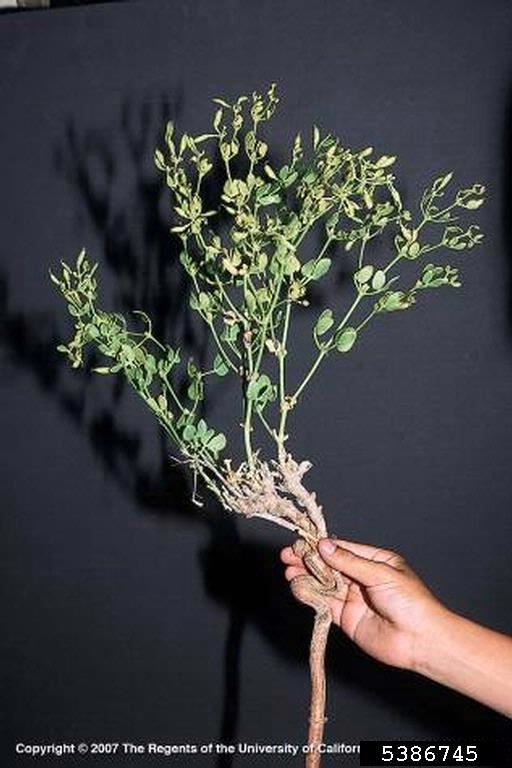
Syrian beancaper: entire plant including root
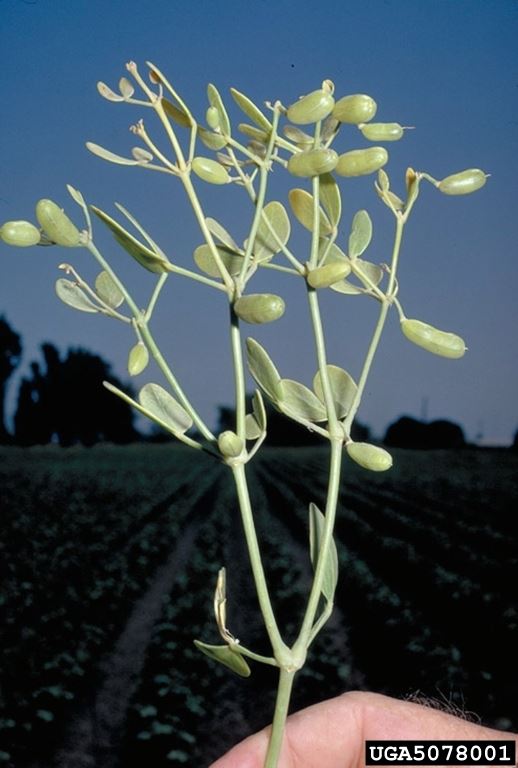
Syrian beancaper: foliage and fruit
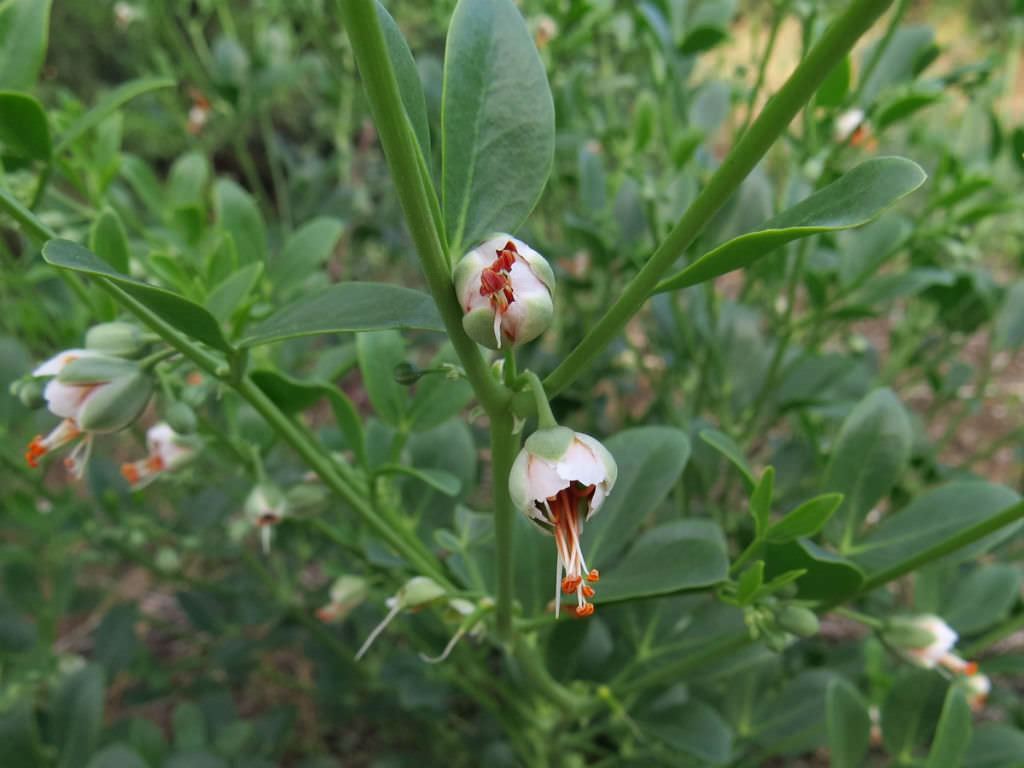
Syrian beancaper: flowers and foliage
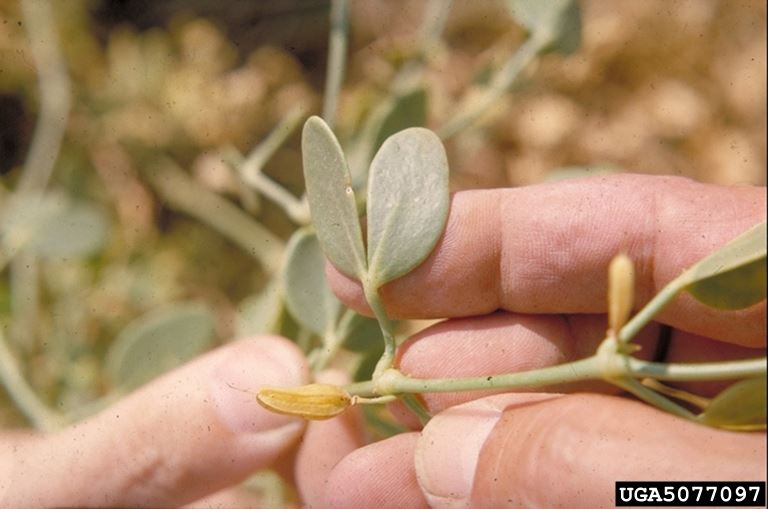
Syrian beancaper: foliage
Resources
-
References
Canada Food Inspection Agency. (2016, Agust 10). Syrian bean-caper – Zygophyllum fabago. Retrieved from http://www.inspection.gc.ca/plants/plant-pests-invasive-species/invasive-plants/fact-sheets/syrian-bean-caper/eng/1331820817035/1331820887749
Davison, J., & Wargo, M. Syrian beancaper: another new noxious weed threatens Nevada [PDF file]. Retrieved from https://www.unce.unr.edu/publications/files/nr/2001/FS0146.pdf View PDF
Nevada Department of Agriculture. Syrian beancaper (Zygophyllum fabago). Retrieved from http://agri.nv.gov/Plant/Noxious_Weeds/WeedList/Syrian_beancaper_(Zygophyllum_fabago)/
Washington State University. (2011, December). Syrian beancaper [PDF file]. Retrieved from https://s3.wp.wsu.edu/uploads/sites/2072/2013/11/Syrian-Beancaper2.pdf View PDF




